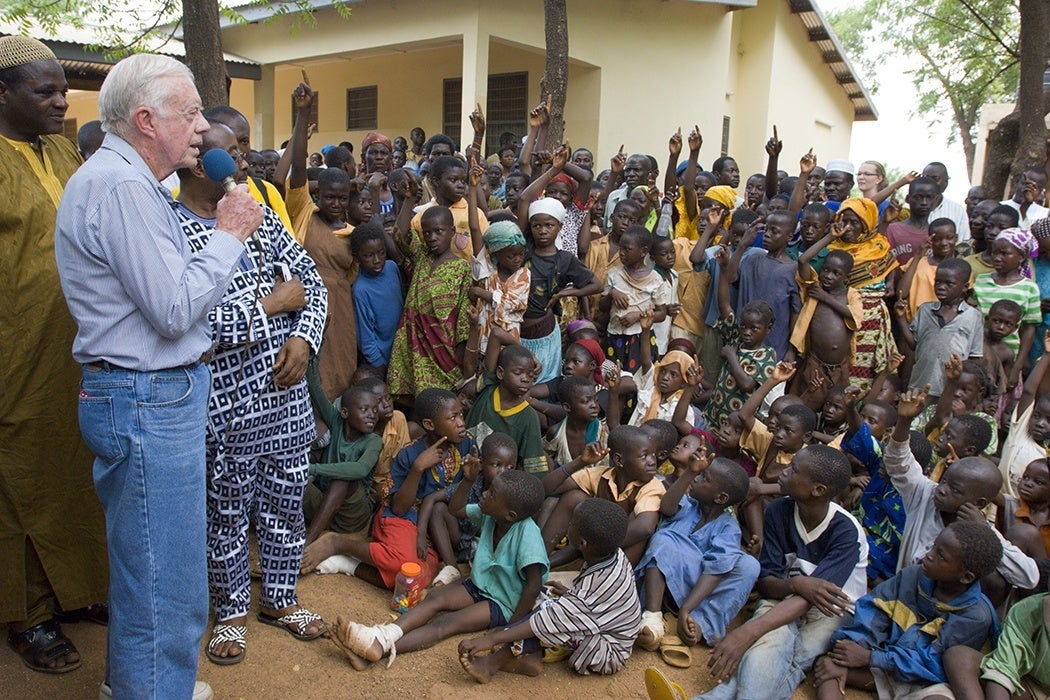Guinea worm, scourge of the tropics, may be nearing its end. The incapacitating condition, caused by the nematode (roundworm) Dracunculus medinensis, used to affect millions of people a year from Africa to Australia. This year, only 2 cases have been confirmed, both in Chad, putting global eradication within reach. If successful, guinea worm will be the first disease to be eliminated since the final smallpox case in 1978.
For those unfamiliar with guinea worm, its horrors are difficult to comprehend. The parasite’s lifecycle begins when larvae are ingested in dirty drinking water. Over a year, the worm matures, eventually reaching up to a meter in length. (It’s no wonder that ancient texts refer to the creatures as “fiery serpents,” or “little snakes.”) The adult worm eventually pokes its blind head out through the skin, usually in the feet or lower legs. Just to repeat: a yard-long worm tunnels though your leg muscles. In desperate search of relief from unbearable pain the victim often plunges his leg into cool water, allowing the parasite to release its offspring.
The treatment has not changed in millennia. When the worm breaks the skin, it must be carefully wound onto a dowel. The process must be slow, for if the worm breaks, potentially fatal infection is guaranteed to follow. It can take months of agony to completely remove the worm, and many people are then re-infected the following wet season. Women, children, and others who typically fetch water are most vulnerable. The victim’s suffering aside, having a significant portion of a village’s workforce out of commission for months every year does severe economic harm.
So how has the infection rate been reduced so drastically? Unlike smallpox, there is no vaccine for guinea worm. Credit goes mostly to former U.S. president Jimmy Carter, whose Carter Center has made guinea worm eradication a priority. Without a vaccine, it comes down to shoe leather and infrastructure improvement. Safe drinking water, usually from a well, had to be provided for everyone. Equally importantly, the word had to go out that those infected with the mature worm could not be allowed into the drinking water, breaking the parasite’s lifecycle. It has been known since the early 20th century that filtering water could prevent infection with the larvae; a cheap, paper straw with a filter has been widely distributed to protect travelers and those otherwise distant from a safe water source.
Through the indomitable and fearless efforts of thousands of health workers, the campaign has worked. Across the tropics, in and out of conflict zones, workers and volunteers fanned out, distributing filter straws and spreading the word. The resources used to battle guinea worm can now be used to fight other tropical diseases. More importantly, millions of people around the world now have access to safe drinking water, reducing other waterborne infections such as cholera or typhoid fever. So goodbye, guinea worm! You won’t be missed.







